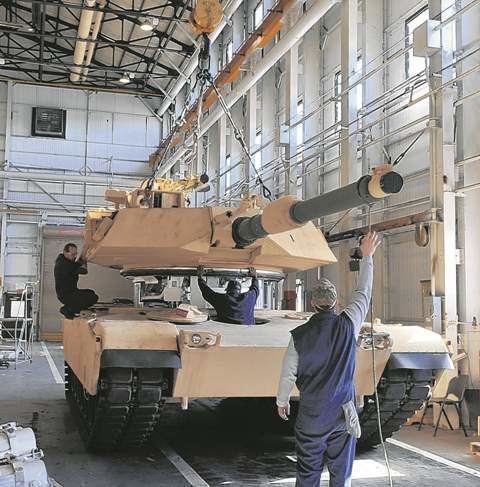 | ||
Address Bldg 363, 7 Frankford Ave, Eastaboga, AL 36260, USA Similar Anniston Police Departme, Anniston Star, Saks High School, Anniston Station, Anniston Metropolit Airport Profiles | ||
Media day at anniston army depot
Anniston Army Depot (ANAD) is a major United States Army facility for the production and repair of ground combat vehicles, overhaul of Small Arms Weapon Systems and the storage of chemical weapons, a.k.a. the Anniston Chemical Activity. The depot is located in Bynum, Alabama. It was placed on the NPL Superfundlist in 1990 because of soil and groundwater contamination with antimony, chromium, lead, thallium and trichloroethylene.
Contents
- Media day at anniston army depot
- Anniston army depot 75th anniversary celebration
- Geography
- Description
- Organizational structure
- Environmental problems
- References
Anniston army depot 75th anniversary celebration
Geography
The depot is located in Calhoun County, Alabama, 10 miles west of Anniston. It covers 25 square miles (65 km2) of land, or 15,200-acres. Its northern side is the Pelham Range portion of the Fort McClellan. The central and northern portions of the Depot span over 13,000-acres and serve as an ammunition storage area. The southern side of the Depot is the Southeastern Industrial Area (SIA), a 600-acre industrial operations area with more than 50 buildings and a vehicle test track.
Description
As of 2014, the Depot employs 3,400 civilian workers. Tanks and other equipment are repaired and tested, but historically Anniston's a main role since World War II has been as a major munitions storage site. Anniston is one of seven depots in the United States where chemical weapons are stored (7.2% of nation's chemical weapons stockpile). The stockpile has included rockets, bombs, projectiles, and land mines armed with Sarin, VX nerve agent, or mustard gas. The last chemical munitions were destroyed in September 2011.
ANAD is the only depot capable of performing maintenance on heavy-tracked combat vehicles and their components and houses a state of the art 250,000 sq.ft. Small Arms Overhaul facility, which opened in January 2012 to replace an outdated facility. The depot is designated as the Center of Technical Excellence for the M1 Abrams Tank and is the designated candidate depot for the repair of the M60 Patton tank, AVLB, M728, M88 Recovery Vehicle and M551 combat vehicles. During the Iraq War, over 1,000 M1 tanks, Howitzers, and other armored vehicles were stored awaiting re-engineering.
ANAD is the Army's primary site for final assembly, reset, and overhaul for the Stryker family of wheeled fighting vehicles. All ten of the Stryker vehicle variants are assembled in the Nichols Industrial Park area by contractor General Dynamics − Land Systems. Stryker battle damage repair and reset is accomplished through a work sharing arrangement between the Depot and contractor, including a Stryker Exchange Program that converts the original flat bottomed Stryker vehicle to the IED-resistant Double V Hull configuration developed for combat operations in Afghanistan.
The Depot houses and operates a facility for the repair, restoration, and/or upgrade of infantry weapons such as the Beretta M9 pistol, M16 rifle, and M2 machine gun. Any firearm deemed unusable or obsolete is destroyed on the premises, the materials are reduced to unusable pieces and then sold for scrap to be melted down.
Organizational structure
ANAD is under command of the US Army TACOM Life Cycle Management Command (TACOM LCMC), although other operators on the facility include the Defense Logistics Agency, Defense Reutilization and Marketing Office, United States Army Center of Military History, Health Services Command, Soldier and Biological Chemical Command, and the Civilian Marksmanship Program.
Environmental problems
In 1989, the EPA placed part of the Depot on the National Priorities List, and one year later, the EPA and the Army agreed to address the entire Depot under the Superfund for antimony, chromium, lead, thallium and trichloroethylene in ground water and soils. Since then, contaminated ground water has been pumped and treated, contaminated soil has either been dug up or capped, and land use controls have been put in place. Contaminated fractured bedrock needs to be addressed. The Depot has a Restoration Advisory Board (RAB) composed of community members and representatives from the Depot and other agencies.
